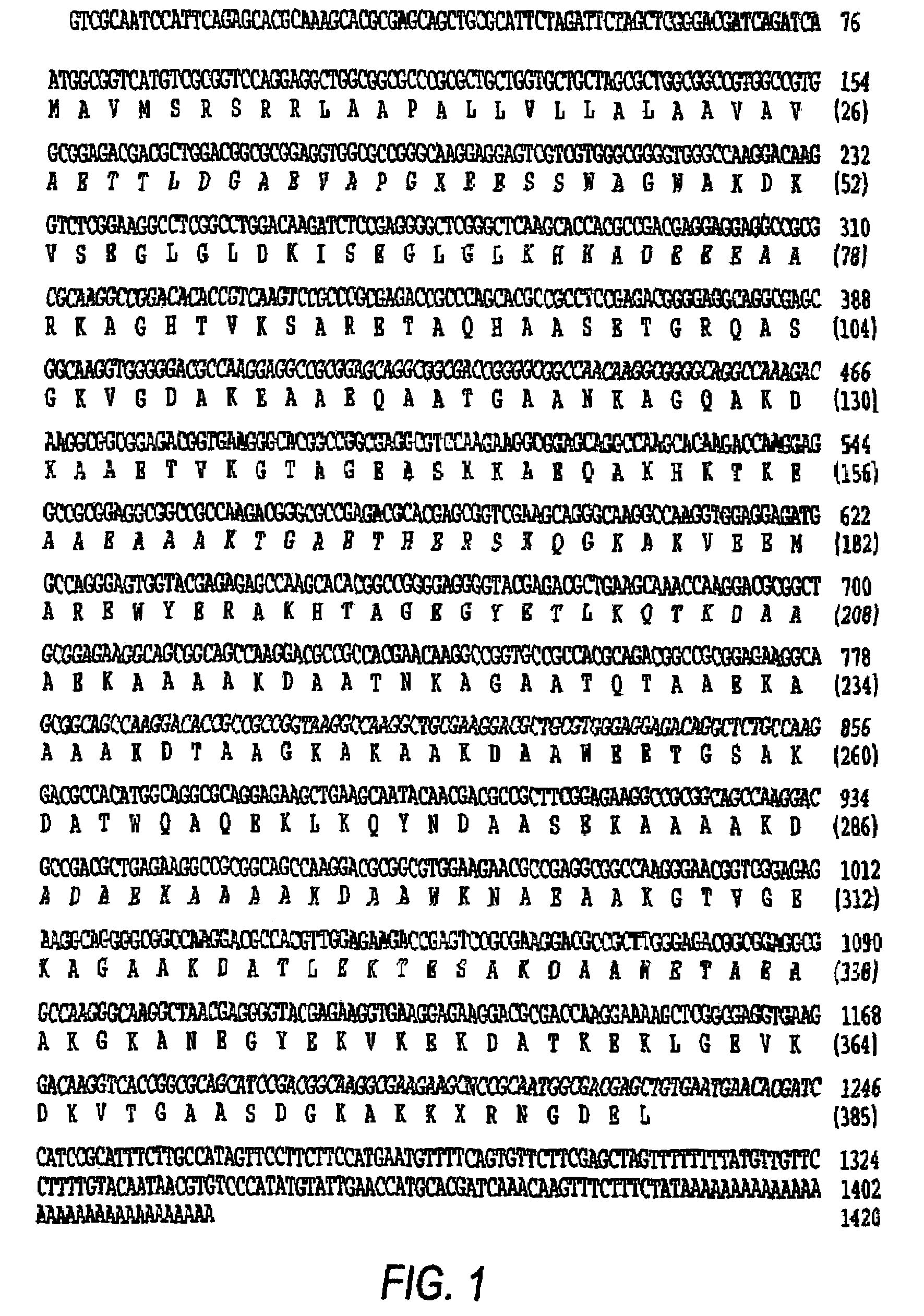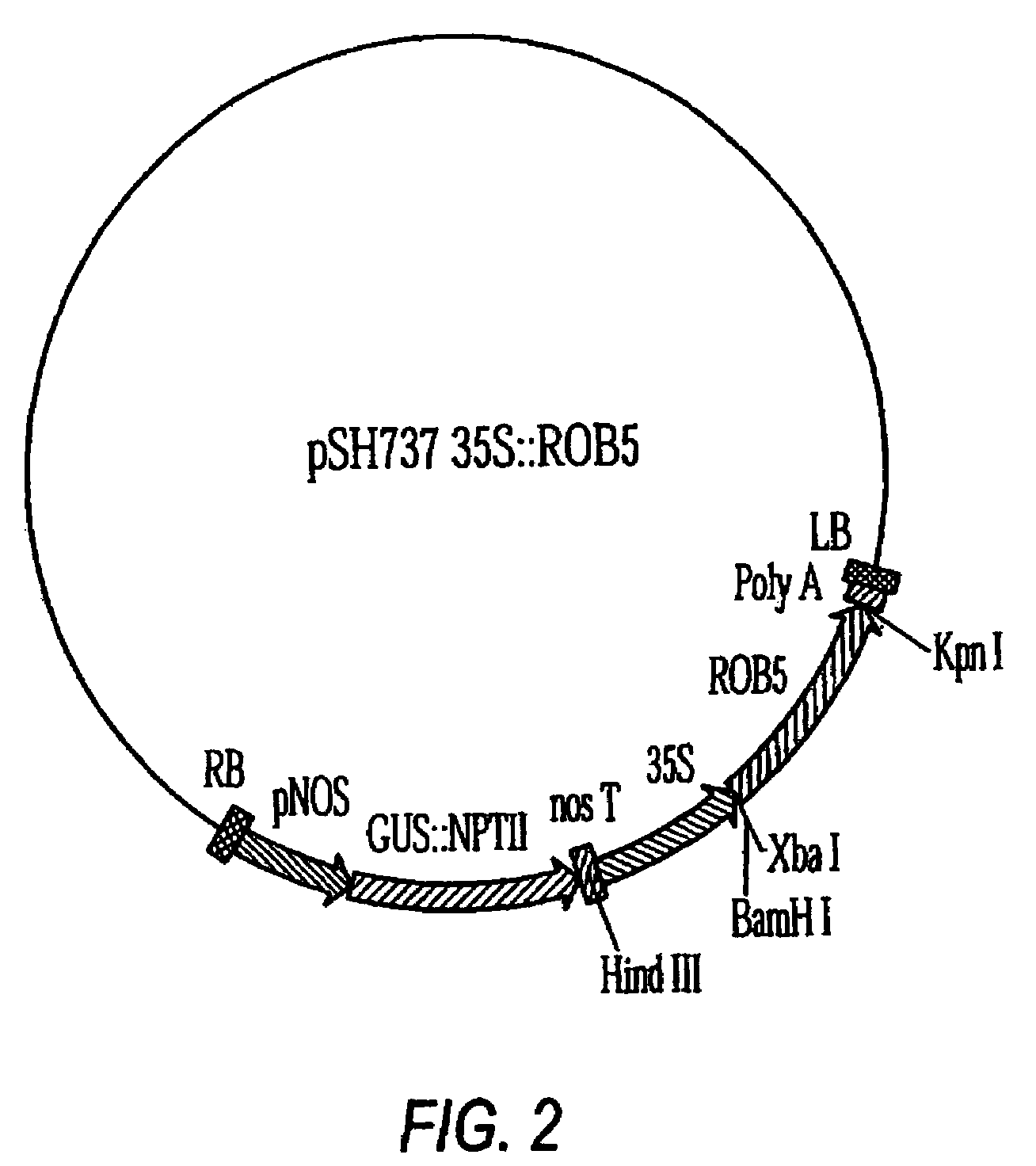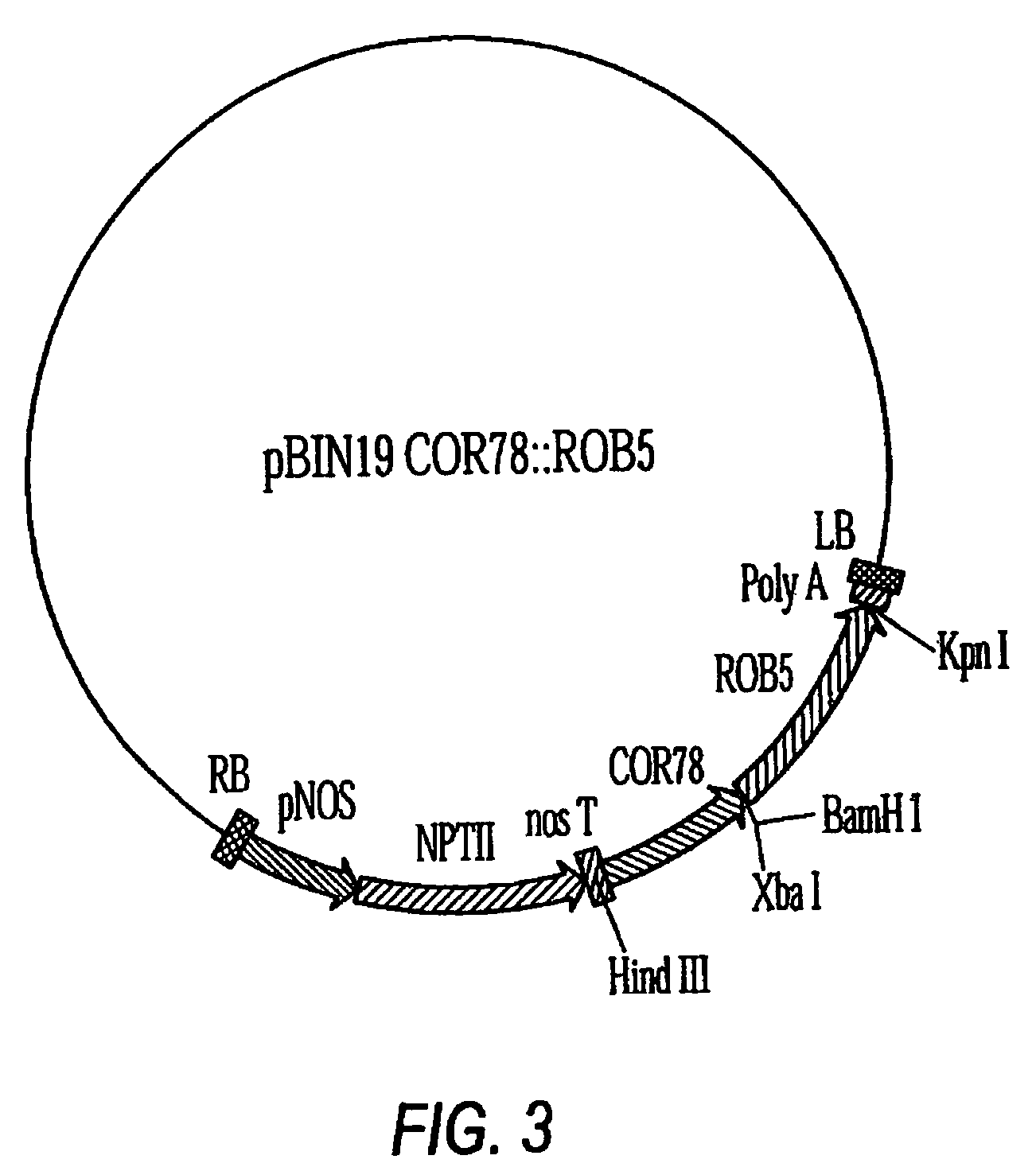Plant stress tolerance genes, and uses therefor
a plant stress and gene technology, applied in the field of plant stress tolerance, can solve the problems of crop damage or loss, crop devastation can translate into financial ruin for those involved in the agricultural industry, and the effect of stress tolerance and/or plant growth increas
- Summary
- Abstract
- Description
- Claims
- Application Information
AI Technical Summary
Benefits of technology
Problems solved by technology
Method used
Image
Examples
example 1
Attempts to Isolate and Characterize Stress-Response Genes from Bromegrass Using Degenerate Oligonucleotide Probes Derived from Microsequencing Data
[0203]The inventors' initial attempts to isolate plant stress response proteins were unsuccessful. Abscisic acid responsive heat-stable proteins (enriched for 43-45 kDa polypeptides) were isolated by heat treatment (90° C. for 30 min), (NH4)2 SO4 precipitation and Sephadex G-50 chromatography as described previously by Robertson et al. (1994). These protein fractions were used for protection assays and protected thermosensitive proteins against heat and pH induced denaturation in vitro. Sucrose added in combination with the heat-stable abscisic acid responsive proteins showed maximum protection against denaturation.
[0204]After heat fractionation and sephadex chromatography, the polypeptides having a size range of about 43-45 kDa were further purified by one and two-dimensional SDS-PAGE prior to N-terminal sequencing and antibody producti...
example 2
Polyclonal Antibody Production, Antibody Purification, and DNA Library Screening Permitted Isolation of ROB5
[0205]The 43-45 kDa polypeptides were excised from preparative SDS-PAGE gels, washed with phosphate buffered saline, powdered in liquid nitrogen and prepared for injection into two rabbits using Freunds complete and incomplete adjuvant. Antibody production followed standard procedures and ELISA testing protocols (current protocols In Immunology 1994, Eds. Colgian et al. John Wiley and Sons, Inc. Vols. 1 to 3).
[0206]The polyclonal antibodies prepared against the 43 to 45 kDa stress proteins were further purified by crossed-immunoprecipitation against phage (λ ZAP) and host bacterial protein fractions. These antibodies were then used to screen a cDNA library prepared in λ ZAP by using mRNA isolated from absicisic acid (ABA)-treated bromegrass cells and immunoscreening was performed using kits commercially available from Stratagene. Two independent cDNA libraries from bromegrass ...
example 3
ROB5 Sequence Analysis
[0207]FIG. 1 gives the nucleotide sequence of the ROB5 gene, and the corresponding ROB5 protein thus obtained, the cDNA coding for one of the 43 to 45 kDa proteins previously discussed (see also SEQ ID NOS: 1 and 2). The cDNA is 1419 base pairs long with a translated reading frame of 1158 base pairs. There is a 75 base pair 3′-untranslated region followed by a putative 27 amino acid leader or signal sequence. The N-terminal sequence obtained from proteins purified from bromegrass cells start at amino acid residue 28. The signal sequence is hydrophobic (rich in alanine, valine and leucine) and possibly associates with membranes. Following the stop codon there is a 5′ untranslated sequence of 186 base pairs. There are four distinct repeats (KAAAAK: SEQ ID NO: 4)) in the sequence, towards the carboxy terminus. The calculated molecular weight is 39, 586.59 Daltons and the calculated isoelectric point is 8.359. The sequence is 29.88% A+T and 70.03% C+G with a meltin...
PUM
| Property | Measurement | Unit |
|---|---|---|
| temperatures | aaaaa | aaaaa |
| temperatures | aaaaa | aaaaa |
| diameter | aaaaa | aaaaa |
Abstract
Description
Claims
Application Information
 Login to View More
Login to View More - R&D
- Intellectual Property
- Life Sciences
- Materials
- Tech Scout
- Unparalleled Data Quality
- Higher Quality Content
- 60% Fewer Hallucinations
Browse by: Latest US Patents, China's latest patents, Technical Efficacy Thesaurus, Application Domain, Technology Topic, Popular Technical Reports.
© 2025 PatSnap. All rights reserved.Legal|Privacy policy|Modern Slavery Act Transparency Statement|Sitemap|About US| Contact US: help@patsnap.com



